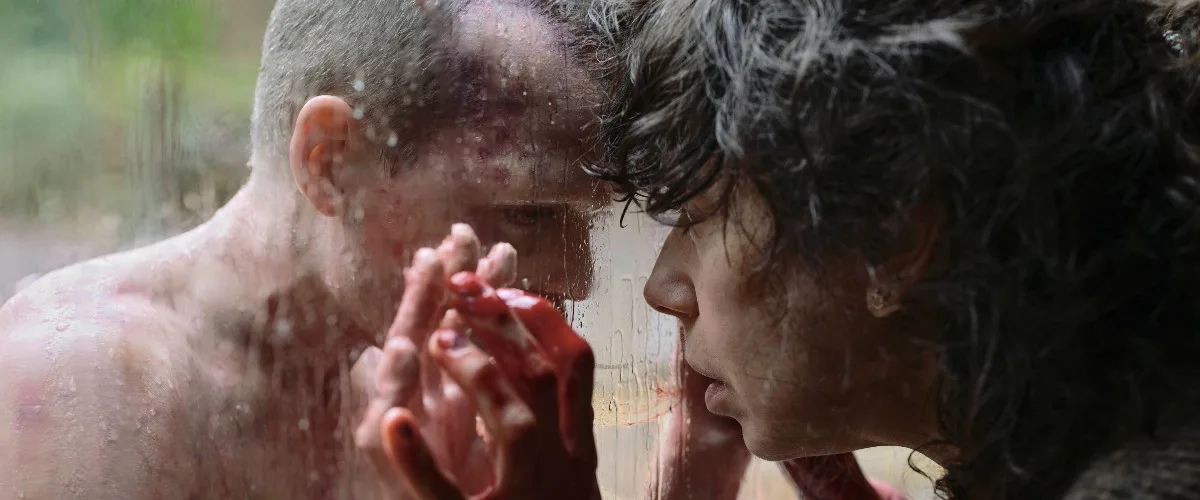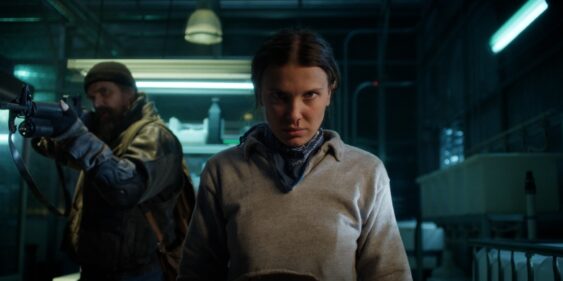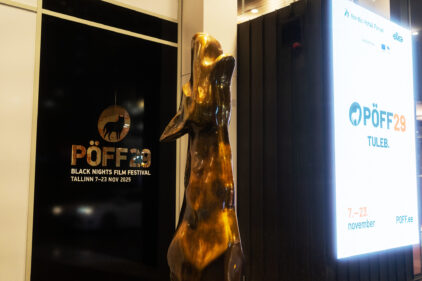Danny and Michael Philippou’s highly anticipated follow-up to their surprise hit “Talk to Me” is a movie that’s perhaps even more chilling—if slightly less focused—than their breakout feature debut. In their new film “Bring Her Back,” parental grief unleashes madness and abuse on a harrowing scale with enough wince-inducing violence to keep many seasoned moviegoers squirming in their seats. But while “Talk to Me” was a svelte thriller with supernatural elements, “Bring Her Back” has a bit of a “spaghetti on the wall” feel, throwing lots of ominous visuals and ideas at the audience in the hopes one of them will push the right scare buttons.
“Bring Her Back” opens on a pair of siblings, Andy (Billy Barratt) and Piper (Sora Wong), as they find the body of their father, lifeless, on the floor of the shower. Now orphaned, Andy, not yet 18, pleads with the social worker on their case, Wendy (Sally-Anne Upton), to stay with his younger sister until he can apply for custody. Piper is blind, and Andy helps her navigate the world as much as he can. Accepting the request, Wendy places them in the care of Laura (Sally Hawkins), a former social worker herself whose daughter’s tragic death has clearly affected her and her son, Oliver (Jonah Wren Phillips), whose lack of speech and odd behavior makes Andy believe something is seriously wrong with the illusion of their happy foster home. Soon enough, strange happenings cause Laura’s real plans to come into focus, and Piper and Andy must find a way to escape.
Co-written by Danny Philippou and Bill Hinzman, “Bring Her Back” has no shortage of strange goings-on to make a viewer second-guess what is actually happening. There’s a heavy psychological element at play from the start, as the film’s gruesome discovery and hidden secrets unfold as the plot thickens. For instance, once Andy moves into Laura’s house, he begins wetting the bed, an awkward occurrence he tries to hide by cleaning his clothes and sheets as soon as he’s up. The real explanation I won’t spoil, but it’s rooted in Laura’s gaslighting to prove Andy is unsuitable to take Piper away from her once he’s of age in a few months’ time. There’s also a strange cult ritual from another country, shown in a grainy video that appears multiple times throughout the film, which feels like an unnecessary scare tactic. It’s an excuse to squeeze in a bit more gore and a few more jump scares, but the movie is freaky and sad enough without these extra intrusions that really could have just shown up at the climax.
While “Bring Her Back” shares a number of themes with the Philippous’ predecessor “Talk to Me”—like a younger sibling in danger, self-pulverization, and unexplained otherworldly events—it also shares some spiritual companionship to the family horrors of Ari Aster’s “Hereditary” and the opening of “Midsommar,” where a death of loved ones derail our protagonists’ normalcy and plunge them into a world of terror and despair. In “Talk to Me,” the directing team of brothers followed a haunted hand through various teen parties as the kids used it to face ghosts and become temporarily possessed as a dare, seeking brief online fame. It explored viral video culture and teenage coming-of-age rituals while delivering a significant number of scares, answering the hypothetical question, “What happens when a prank possession goes awry?” “Bring Her Back” is strongest when focused on the siblings’ dealings with their mercurial foster mom, referencing the real-world abuse of kids in the foster care system and how few resources the pair have to get help. Because there are more things happening simultaneously in “Bring Her Back,” there are fewer chances for the audience to take a breather before the next horrifying scene jars them awake.
Despite its propensity for shock factor and supernatural child endangerment over narrative cohesion, “Bring Her Back” is fairly successful at dropping jaws (especially when it comes to one particularly bloody knife scene), and the suspense is sustained throughout the movie. Hawkins is eerily great as the foster mom with questionable intentions, riffing on the warmth of her “Paddington” matriarch and twisting it into something deviously sinister and tragic. As Andy, Barratt buoys the film with heart, with a few tender and comedic moments between the scary ones, and Wong brings so much life to Piper, a character who must decide who to believe when caught in the middle of Andy’s care and Laura’s manipulation. “Talk to Me” cinematographer Aaron McLisky brings his sleek visual style, twisty-turny camera movement, and detailed close-ups to this film’s deceptively cozy setting, savoring every violent encounter from one room to the next through his lens. It may not meet the high watermark of the brothers’ first outing, but “Bring Her Back” is still quite the wild ride and shows the pair still have plenty of spooky tricks up their bloody sleeves.




















